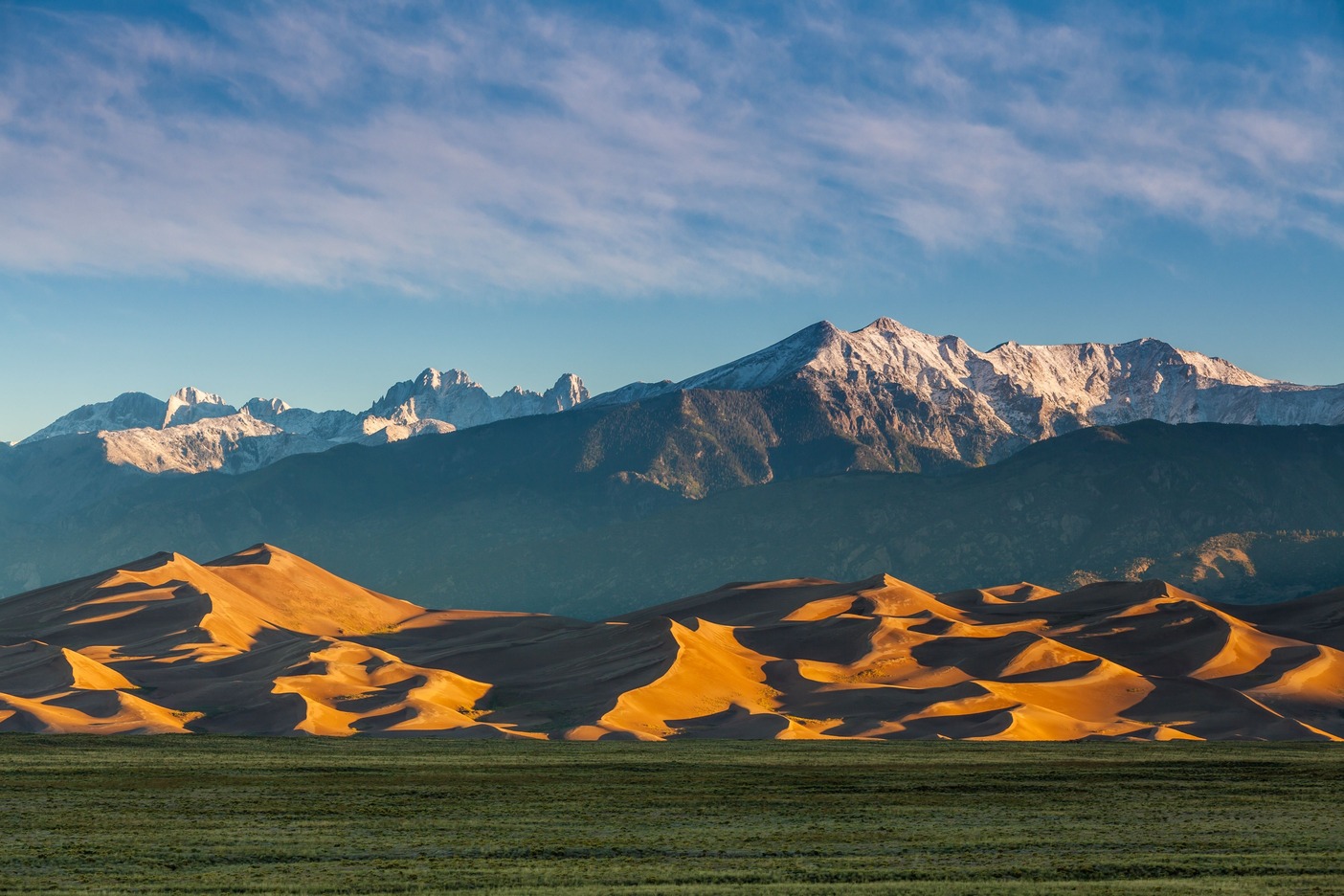The Local newsletter is your free, daily guide to life in Colorado. For locals, by locals.
People usually associate giant sand dunes with the desert, not the Rocky Mountains. Yet along the eastern edge of Colorado’s San Luis Valley lies a dune field with mounds of sand up to 750 feet high, several stories taller than Denver’s Republic Plaza building. As if the sight of these enormous dunes—the tallest in North America—wasn’t dramatic enough, they also have an incredible natural backdrop: the Sangre de Cristo mountain range, a long line of jagged, alpine peaks, eight of which are fourteeners.
The dunes ultimately owe their presence here to a quirk of topography—and some ancient lakes. The dunes are tucked up against a bend in the Sangres, which define the San Luis Valley’s eastern edge. The western side is demarcated by the San Juan Mountains, where much of the sand comprising the dunes originates.

An episode of stretching, related to the movement of earth’s tectonic plates, began to rip this region apart about 30 million years ago. This extension gradually opened up the San Luis Valley—a low spot between the two ranges—while simultaneously uplifting the adjacent mountains.
(Read our guide to hiking the Great Sand Dunes)
Once the mountains started to rise, however, Mother Nature began to tear them down, and sediment shed off the ranges slowly filled the intervening valley. At times its floor was covered by a series of lakes, whose shorelines waxed and waned in tune with wetter and drier climate cycles. Eventually a drier climate prevailed and the lakes dried up, leaving behind a thick layer of sand and mud. Prevailing westerly winds picked the grains up and carried them toward a low point in the Sangres—the gap between the Crestones, a group of four fourteeners to the north, and the Blanca Massif to the south. At this low point, the winds are constricted and speed up, providing enough additional energy to pick up and carry the relatively heavy grains of sand across the valley.
But as the wind, laden with sand, begins to climb over the Sangres, it slows down—and drops the grains along the toe of the range, just below the gap. And over the last 440,000 years, these conditions—a perfect storm, if you will—have caused the wind to carry enough sand to create North America’s tallest dunes.








